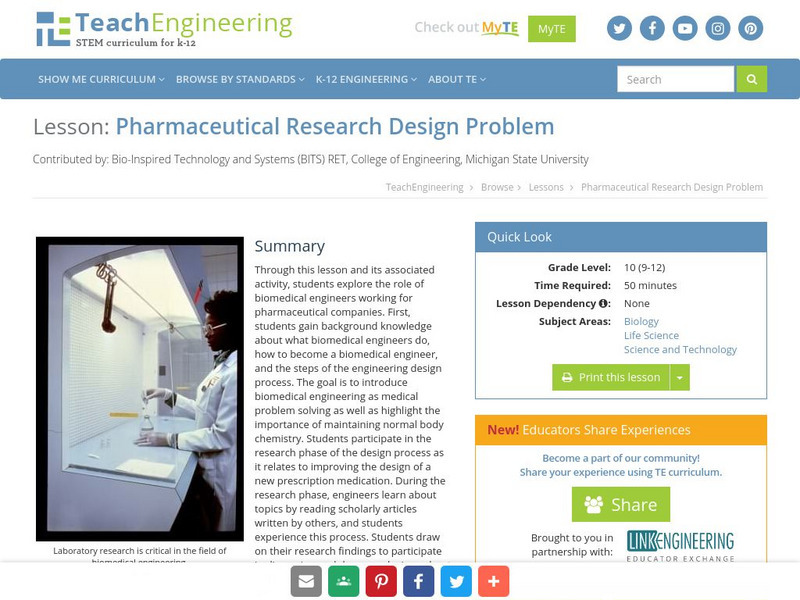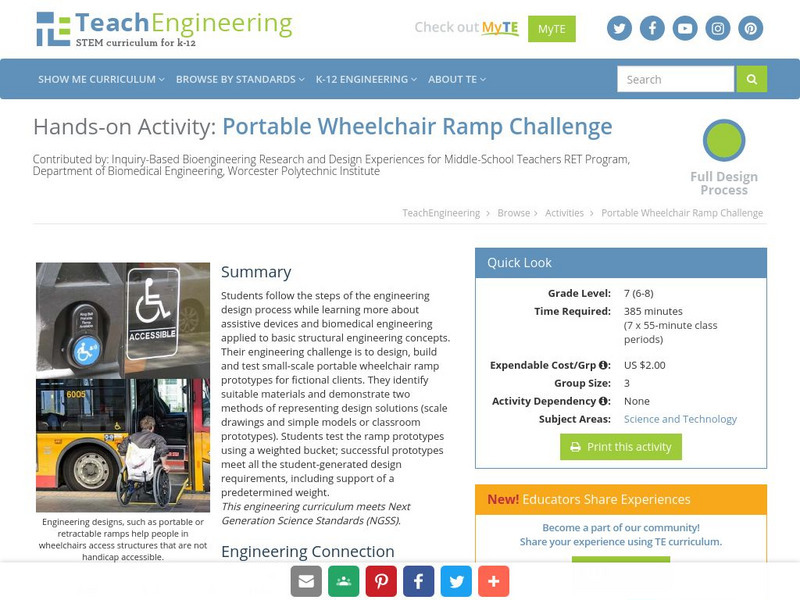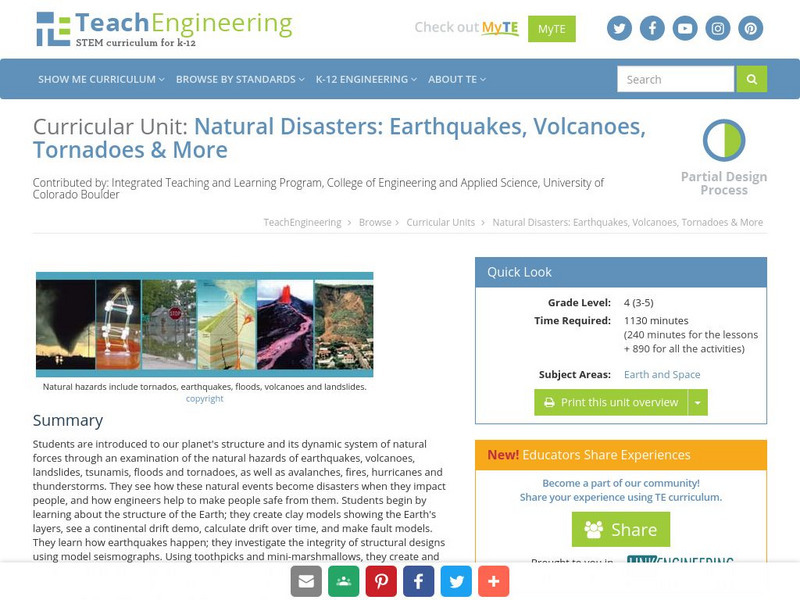Hi, what do you want to do?
Curated OER
Make a Spaceship
Students create a spaceship, satellite, or space station. In this space activity, students consider design elements for buildings and objects in space. Students use K'Nex, Legos, or other household materials for their creation. Students...
Curated OER
Testing the Accuracy of a Rain Gauge
Young scholars identify and test variables that may affect the accuracy of a rain gauge.
Curated OER
Create Your Own Family Crest
Students develop a design for their own family crest. Students make a large model crest for their family.
Curated OER
Aeronautics Propulsion
Students use the World Wide Web to access additional information needed to complete the activities on the forces on an airplane, the function of the stabilizer, and the calculation of Mach speed, temperature, pressure, and thrust.
Curated OER
Animal Encounters
Young scholars use their visualizing and interpreting skills to produce original writings and artwork.
Curated OER
Aortic Stenosis Investigation
Students describe how blood flows through the heart and the anatomy of the aortic valve. They examine the condition of aortic stenosis and create diagrams of the condition in the heart. They complete experiments using the model they...
Curated OER
Navvies/ Canals
High schoolers investigate the concept of water permeability in order to help find the best material to line a canal. The goal is to find a material that does not allow water to escape. They also conduct an experiment and record the...
Curated OER
How Things Fly
Pupils, by drawing on their own experiences, discuss and examine the basic physics of flight. They participate in a variety of activities regarding flight.
Curated OER
Spy on a Spider
Young scholars view slides or live specimens to name and describe the distinguishing features of groups of arthropods, especially spiders and insects. They complete worksheets, observe webs and then search for and record where spiders...
Curated OER
Field Of Beans
High schoolers investigate the concept of crop farming. They plant small fields to test different theories of agriculture. Students keep care over the fields, including pest and weed control. High schoolers make and record daily...
Curated OER
Water
Students create a water filter according to given criteria. I this chemistry lesson, students evaluate the importance of water in their lives. They develop a book or brochure on the water treatment process.
Discovery Education
Cool It!
Adjust the melting time of ice without varying the temperature! Learners experiment with different materials to decide how the materials affect the rate an ice cube melts. They then connect their findings to the conductivity of each...
Curated OER
Casting Light On The Dark Ages
Students write a 250-word report on their findings, comparing life in the Middle Ages to what they already know about life today. They explore a website imbedded in this plan to do their research.
TeachEngineering
Teach Engineering: The Universal Language of Engineering Drawings
Students practice the ability to produce clear, complete, accurate and detailed design drawings through an engineering design challenge. Using only the specified materials, teams are challenged to draw a design for a wind-powered car....
TeachEngineering
Teach Engineering: Pharmaceutical Research Design Problem
Through this lesson plan and its associated activity, students explore the role of biomedical engineers working for pharmaceutical companies. First, students gain background knowledge about what biomedical engineers do, how to become a...
TeachEngineering
Teach Engineering: Detail Drawings: Communicating With Engineers
Students are introduced to detail drawings and the importance of clearly documenting and communicating their designs. They are introduced to the American National Standards Institute (ANSI) Y14.5 standard, which controls how engineers...
TeachEngineering
Teach Engineering: Off Road Wheelchair Challenge
Students further their understanding of the engineering design process (EDP) while being introduced to assistive technology devices and biomedical engineering. They are given a fictional client statement and are tasked to follow the...
TeachEngineering
Teach Engineering: Design Step 7: Improve and Redesign/manufacture a Product
As students learn more about the manufacturing process, they use what they learned from testing their designs in the previous activity to continue to improve and redesign. Students also have the opportunity to manufacture their final...
TeachEngineering
Teach Engineering: Drawing Designs in Detail
Students practice creating rudimentary detail drawings. They learn how engineers communicate the technical information about their designs using the basic components of detail drawings. They practice creating their own drawings of a...
TeachEngineering
Teach Engineering: Drawing Magnetic Fields
Students use a compass and a permanent magnet to trace the magnetic field lines produced by the magnet. By positioning the compass in enough spots around the magnet, the overall magnet field will be evident from the collection of arrows...
TeachEngineering
Teach Engineering: Naturally Organized
Students work in teams to design a tabletop supply organizer inspired by the natural home of an insect species. Their prototype stores the group's classroom supplies (scissors, crayon boxes, pencils, and glue sticks). In addition to...
TeachEngineering
Teach Engineering: Portable Wheelchair Ramp Challenge
Students follow the steps of the engineering design process while learning more about assistive devices and biomedical engineering applied to basic structural engineering concepts. Their engineering challenge is to design, build and test...
TeachEngineering
Teach Engineering: Balloons
Students follow the steps of the engineering design process as they design and construct balloons for aerial surveillance. After their first attempts to create balloons, they are given the associated Estimating Buoyancy lesson to learn...
TeachEngineering
Teach Engineering: Natural Disasters
Students are introduced to our planet's structure and its dynamic system of natural forces through an examination of the natural hazards of earthquakes, volcanoes, landslides, tsunamis, floods and tornados, as well as avalanches, fires,...




























